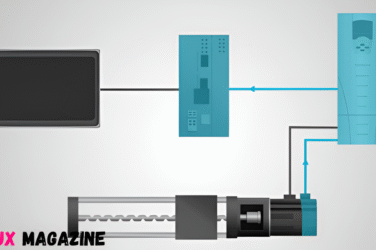Imagine this: Your 82-year-old father lives alone, and you’re juggling a full-time job while worrying about his daily safety. An AI companion like a smart robot reminds him to take his medications, chats about his favorite baseball team, and even detects a fall via sensors. It sounds like a dream solution in our tech-driven world. But can these digital helpers truly step in for the warm touch of a human caregiver? As of 2025, with advancements in AI accelerating, this question is more relevant than ever. According to recent reports from the U.S. Department of Health and Human Services (HHS), AI innovations are being backed to ease caregiver burdens, but experts widely agree that while AI can augment care, full replacement remains a distant, if not impossible, reality.
In this article, we’ll explore the capabilities of AI companions, their limitations, real-world examples, and whether they could ever fully substitute human caregivers for seniors and individuals with disabilities. Drawing from 2025 insights, including HHS initiatives and AARP studies, we’ll weigh the pros and cons to help you decide what’s best for your loved one. Keywords like “AI companions for seniors” and “AI vs human caregivers for disabilities” are buzzing in searches, reflecting a growing need amid caregiver shortages. Let’s dive in.
What Are AI Companions, and How Do They Work in 2025?
AI companions are intelligent devices or software designed to assist with daily living. By 2025, they’ve evolved significantly, powered by machine learning, natural language processing, and IoT integration. Popular examples include:
- Voice-Activated Assistants: Upgraded versions of Amazon Echo or Google Home, now with advanced health monitoring. They can track vital signs via wearables, schedule doctor appointments, and provide medication reminders with 99% accuracy, per recent AARP findings.
- Robotic Companions: Devices like ElliQ or Pepper robots engage in conversations, detect mood changes through facial recognition, and offer companionship to combat loneliness, a major issue affecting 43% of seniors, according to CDC data.
- Specialized Apps for Disabilities: Tools like Seeing AI for visually impaired users describe surroundings in real-time, while apps like Be My Eyes connect users to human volunteers via AI-moderated calls. For those with mobility challenges, AI-powered exoskeletons or smart wheelchairs adapt to user needs autonomously.
These technologies aren’t sci-fi anymore. A 2025 Forbes article highlights how AI unlocks potential for people with disabilities by providing on-demand support, such as predictive text for communication disorders or environmental adaptations for neurodiverse individuals. HHS’s Caregiver AI Challenge, launched this year, funds innovations that educate and assist caregivers, reducing administrative tasks so humans can focus on emotional care.
The Pros: How AI Companions Are Revolutionizing Care
AI’s strengths lie in efficiency, availability, and cost-effectiveness, areas where human caregivers often fall short due to shortages.
- 24/7 Availability: Unlike humans, AI doesn’t tire or need breaks. A 2025 study from 3B Healthcare notes that AI healthcare assistants provide round-the-clock monitoring, alerting family or emergency services to irregularities like irregular heartbeats or forgotten meals. This is crucial for seniors with chronic conditions, potentially reducing hospital visits by 25%.
- Personalization and Scalability: AI learns from user data. For people with disabilities, it customizes support, e.g., adjusting speech recognition for those with Parkinson’s or offering haptic feedback for deaf individuals. In home care, AI analytics from HomeWatch Caregivers transform services by predicting needs, like fall risks, before they happen.
- Cost Savings: Professional in-home care averages $4,500 monthly in the U.S., per Genworth’s 2025 Cost of Care Survey. AI companions start at $50–$200 monthly, making them accessible. For families facing caregiver shortages, exacerbated by post-pandemic burnout, AI fills gaps without breaking the bank.
- Empowering Independence: By handling routine tasks, AI helps users maintain dignity. AARP’s 2025 report on AI for caregivers shares stories of seniors using AI to manage groceries via voice commands, freeing them from dependency.
Yet, while these benefits are compelling, they highlight AI as a supplement, not a standalone solution.
The Cons: Why AI Can’t Fully Replace Human Touch
Despite rapid advancements, AI companions have glaring limitations, especially in emotional and adaptive care.
- Lack of Empathy and Intuition: Caregiving isn’t just tasks, it’s human connection. AI can’t hug a senior during a lonely moment or intuitively sense unspoken pain. A 2025 Learn2Care analysis emphasizes that human intuition, like noticing subtle mood shifts, remains irreplaceable. Over-reliance on AI risks isolation, as noted in Forbes’ piece on AI and disabilities.
- Technical and Accessibility Barriers: Not everyone is tech-savvy. Seniors with cognitive impairments or disabilities may struggle with interfaces, leading to frustration. Reliability issues, power outages, glitches, or privacy breaches (AI handles sensitive data), pose risks. HHS warns that while AI reduces strain, it shouldn’t replace human judgment.
- Ethical Concerns: Who programs AI’s decisions? Biases in algorithms could disadvantage certain groups, like non-English speakers or those with atypical disabilities. Plus, in emergencies, AI’s response time might not match a human’s quick thinking.
- Shortage of Human Care Amplifies the Debate: Finding qualified human caregivers is tougher than ever in 2025, with waitlists stretching months due to workforce shortages and high turnover. This exploration of why it’s so hard to find in-home care for people with disabilities delves into systemic issues like low wages and training gaps, making AI seem like a necessary bridge, but not a full replacement.
Real-world feedback from 2025 echoes this: AlayaCare’s guide on AI in home-based care states that AI empowers caregivers by automating admin, but human compassion is the core.
Current Examples and Future Outlook for 2025 and Beyond
In 2025, hybrid models are trending. For seniors, AI like CareSmartz360’s platforms integrate wearables for monitoring, allowing family caregivers to focus on quality time. For disabilities, AI-driven prosthetics and apps enhance mobility, but therapists provide the human element.
Looking ahead, quantum computing and advanced neural networks could make AI more “human-like,” but experts predict augmentation over replacement. A National Family Caregiver Month 2025 feature stresses tech’s role in empowering families, not supplanting them.
Finding the Right Balance: AI as a Partner, Not a Substitute
The verdict? No, AI companions can’t fully replace human caregivers, at least not in 2025. They excel at tasks but falter on empathy. For a deeper dive into AI companions vs human caregivers and finding the right balance for your loved one, consider hybrid approaches: Use AI for monitoring and routines, humans for emotional support.
To implement effectively:
- Assess needs: Consult a geriatrician or disability specialist.
- Start small: Trial AI devices with user-friendly setups.
- Involve family: Discuss preferences to avoid resistance.
- Monitor ethics: Ensure data privacy and bias-free tech.
Your 7-Step Checklist for Integrating AI in Care
- Evaluate your loved one’s specific needs (e.g., mobility, companionship).
- Research 2025 AI options like ElliQ or smart assistants.
- Address accessibility, choose intuitive, voice-based tech.
- Combine with human care for emotional support.
- Test with a short trial period and gather feedback.
- Review privacy settings and emergency protocols.
- Reassess quarterly as needs evolve.
In conclusion, AI companions are transforming care for seniors and people with disabilities, offering unprecedented support amid shortages. But they shine brightest alongside humans, creating a balanced ecosystem. As HHS and AARP advocate, embrace AI to enhance lives, not replace the irreplaceable human heart. If you’re exploring options, start today; the future of care is hybrid, and your loved one deserves the best of both worlds.


















Show Comments (0)